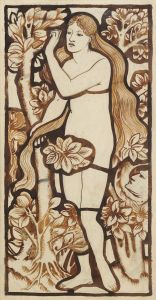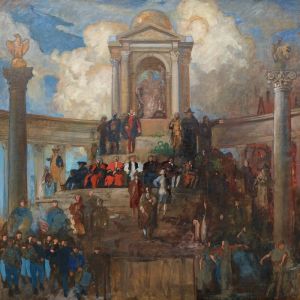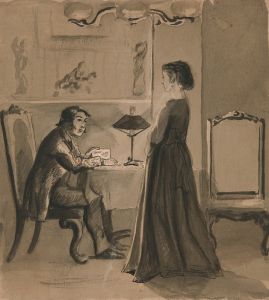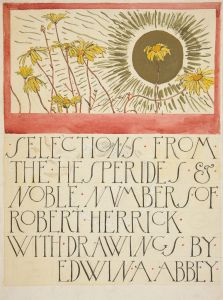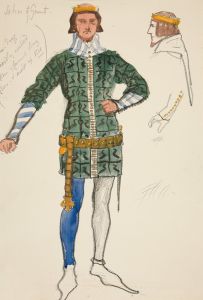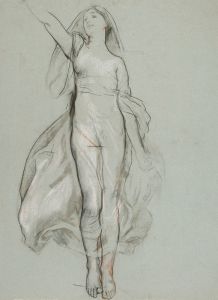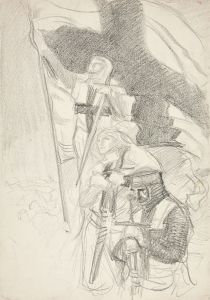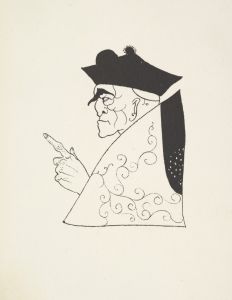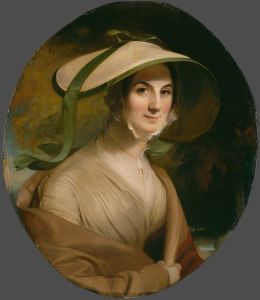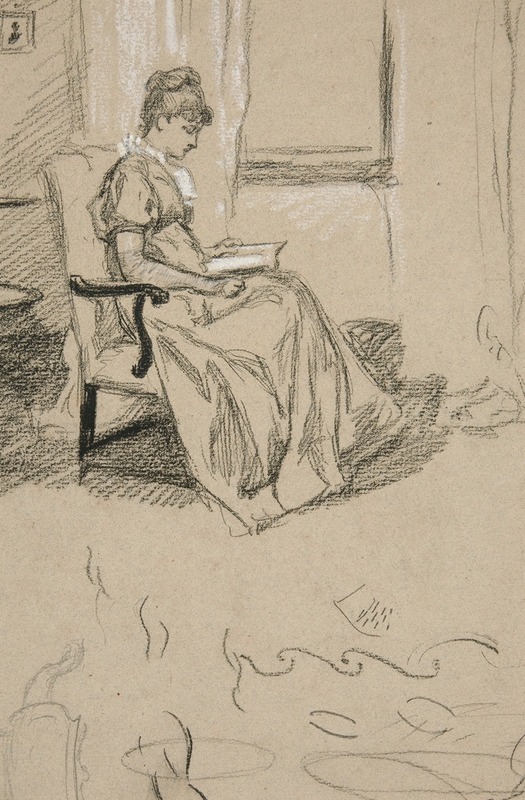
Portrait of Mrs. Abbey, reading
A hand-painted replica of Edwin Austin Abbey’s masterpiece Portrait of Mrs. Abbey, reading, meticulously crafted by professional artists to capture the true essence of the original. Each piece is created with museum-quality canvas and rare mineral pigments, carefully painted by experienced artists with delicate brushstrokes and rich, layered colors to perfectly recreate the texture of the original artwork. Unlike machine-printed reproductions, this hand-painted version brings the painting to life, infused with the artist’s emotions and skill in every stroke. Whether for personal collection or home decoration, it instantly elevates the artistic atmosphere of any space.
Edwin Austin Abbey was an American artist known for his illustrations and paintings, particularly those depicting Shakespearean and Victorian subjects. One of his notable works is "Portrait of Mrs. Abbey, Reading," which captures a personal and intimate moment of his wife, Gertrude Mead Abbey. This painting is a fine example of Abbey's skill in portraiture and his ability to convey the subtleties of character and mood through his art.
Edwin Austin Abbey was born in Philadelphia in 1852 and began his career as an illustrator. He gained recognition for his work in magazines such as Harper's Weekly, where he illustrated scenes from the works of Charles Dickens and William Shakespeare. Abbey's illustrations were celebrated for their attention to detail and historical accuracy, which later translated into his painting style.
"Portrait of Mrs. Abbey, Reading" is a testament to Abbey's transition from illustration to painting. The artwork depicts Gertrude Mead Abbey, whom he married in 1890. Gertrude was not only his wife but also his muse, and she appeared in several of his works. In this particular portrait, she is shown engrossed in a book, a common theme in art that suggests introspection and intellectual engagement.
The painting is characterized by its soft color palette and delicate brushwork, which Abbey used to create a serene and contemplative atmosphere. The light in the painting is gentle, highlighting Mrs. Abbey's features and the pages of the book she is reading. Abbey's attention to detail is evident in the textures of the fabric and the subtle play of light and shadow, which add depth and realism to the composition.
Abbey's work often reflected the influence of the Pre-Raphaelite Brotherhood, a group of English painters, poets, and critics founded in 1848. This influence is apparent in his use of rich colors and his focus on naturalism and detail. "Portrait of Mrs. Abbey, Reading" embodies these qualities, showcasing Abbey's ability to blend realism with a romantic sensibility.
Throughout his career, Abbey received numerous accolades and was elected to prestigious art institutions, including the Royal Academy of Arts in London. His move to England in the late 19th century allowed him to immerse himself in the European art scene, further refining his style and technique. Abbey's work, including this portrait, reflects his dedication to capturing the essence of his subjects with both technical precision and emotional depth.
"Portrait of Mrs. Abbey, Reading" remains a significant piece in Abbey's oeuvre, illustrating his mastery of portraiture and his personal connection to his subject. The painting not only highlights his artistic skills but also offers a glimpse into the private world of the artist and his wife. Abbey's ability to convey the quiet beauty of everyday moments continues to resonate with audiences, making his work timeless and enduring.





